Bilancia ‘La Collina’: Sensational Syrah Wine from Gimblett Gravels in Hawkes Bay, New Zealand
by Ken Gargett
Vertical tastings. Some years back, I had dropped by to say hi to my mother on the way to a wine event. She asked me what I was doing – I should preface this by saying that my mother not only detests wine but considers my current career choice to be worse than blasphemy and that giving up a legal career was an epic waste of a life. Anyway, I told her I was off to a vertical tasting. She looked at me with the sort of complete and utter contempt that only a mother came muster for a wayward son and simply said, “you’d think these people could at least afford chairs.”
In case there is anyone else who falls within my mother’s level of interest/knowledge of vertical tastings, they are a tasting of a particular wine, looking at more than a single vintage. Could be half a dozen; could be every one ever made. A small example would be say, Chateau Latour 1970 to 1990. Sometimes they skip years, so for our example, it could perhaps be 1970, 1976, 1979, 1982, 1983, 1985, 1988, 1989 and 1990. Or any combination.
Vertical tastings are a brilliant way to take a very deep look at a wine. You’ll taste changes in style over the years; the impact of vintages and more than likely, climate change; possibly the winemaker has changed the oak regime; in some cases, the grapes may be sourced from different vineyards, and this may become apparent; discover whether or not the wine ages well or at least identify the optimum drinking window; and so much more. They are the ultimate opportunity to learn as much as possible about a wine.
A horizontal tasting, on the other hand, is where we look at a number of wines from a single vintage, such as all the First Growths from 2010. Or it could be when we look at all the wines from a single producer from a specific vintage. An example would be looking at all the wines from 2018 from Penfolds.
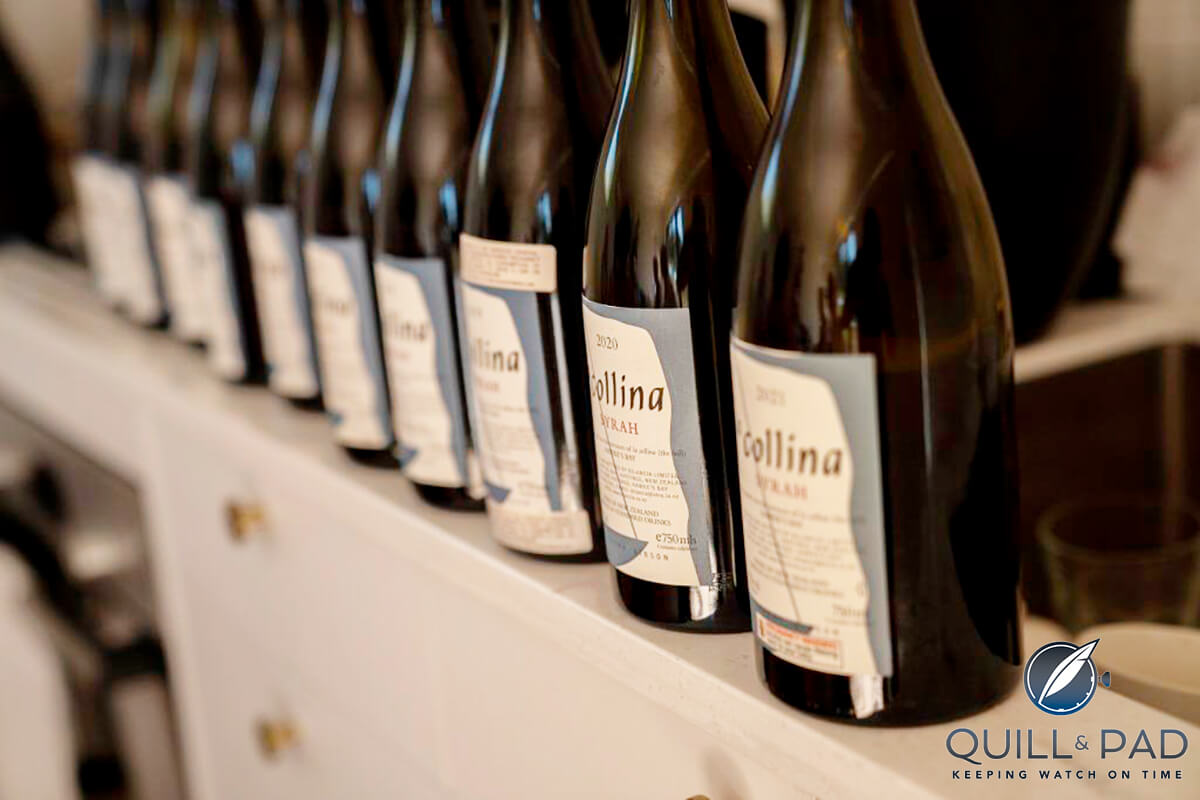
Bilancia La Collina vertical tasting
Of course, a vertical tasting is very much a warts and all event, especially when we look at all the vintages ever released. It exposes the pretenders – so, again as an example, we quickly see that despite the almost maniacal (desperate?) hype, the champagnes from 2003, simply do not match those from 2002, 2004 and 2008. A possible analogy is looking at the films of Quentin Tarantino. ‘Reservoir Dogs’ and ‘Pulp Fiction’ are 2002 and 2008. And ‘Death Proof’ is 2003 (actually, that is harsh even on a vintage like 2003, as surely ‘Death Proof’ is the worst film in human history and should have resulted in the director being banned from ever making another). Perhaps ‘Death Proof’ should be 2001 – really the worst vintage in the Champagne region one could imagine. Okay, a slight digression, but you get the drift.
————————————————————————————————————–
—————————————————————————————————–
Great New Zealand Syrah is a tiny category in the world of wine, but it is such a thrilling one. It is also a category we have featured here in Quill and Pad on several occasions – as part of our looks at the Gimblett Gravels Annual dozens on a couple of occasions, but also specific producers.
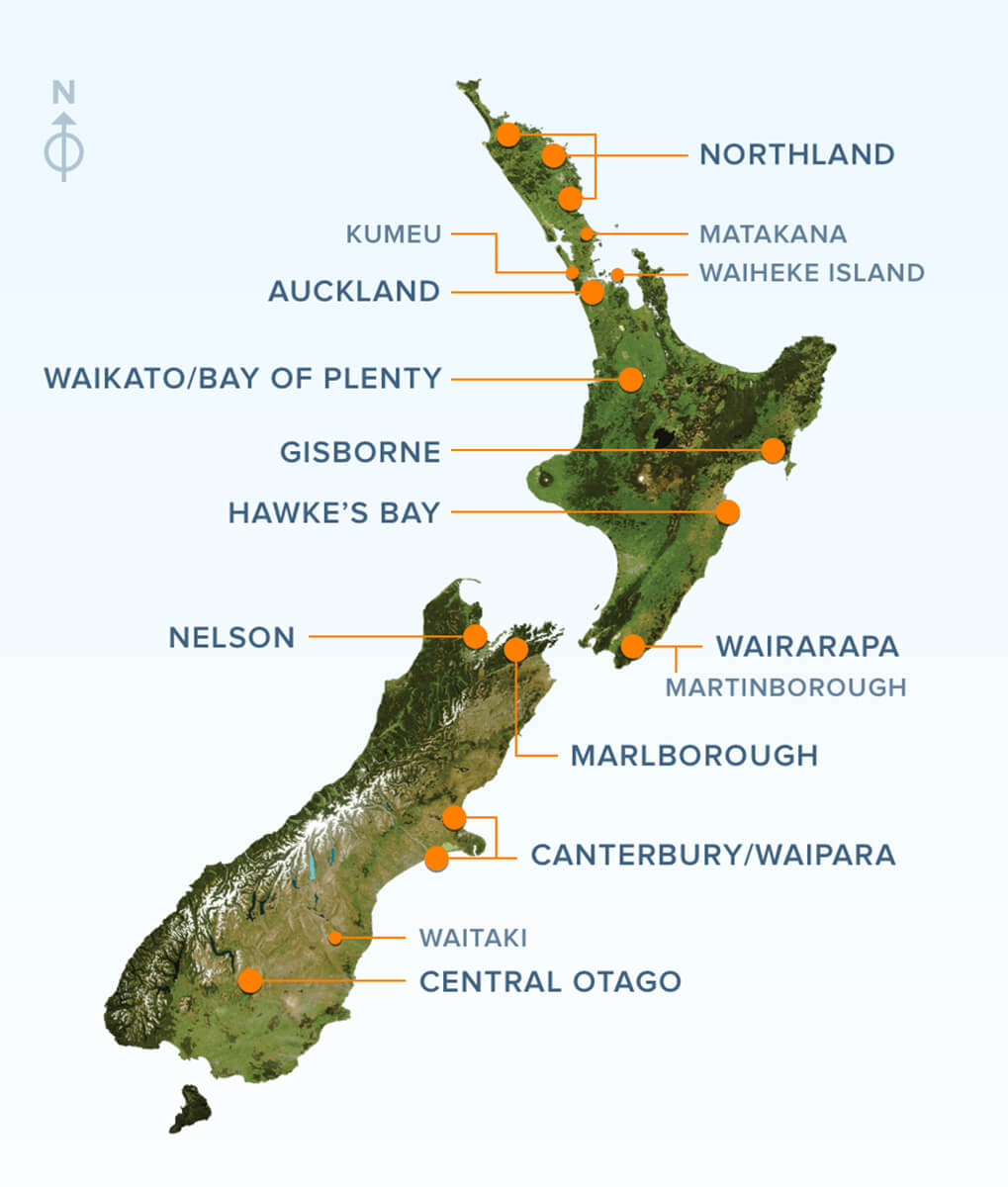
New Zealand wine regions
For me, and many others, there are three truly stunning Kiwi Syrah, all three coming from the Gimblett Gravels sub-region of Hawkes Bay on the east coast on New Zealand’s North Island.
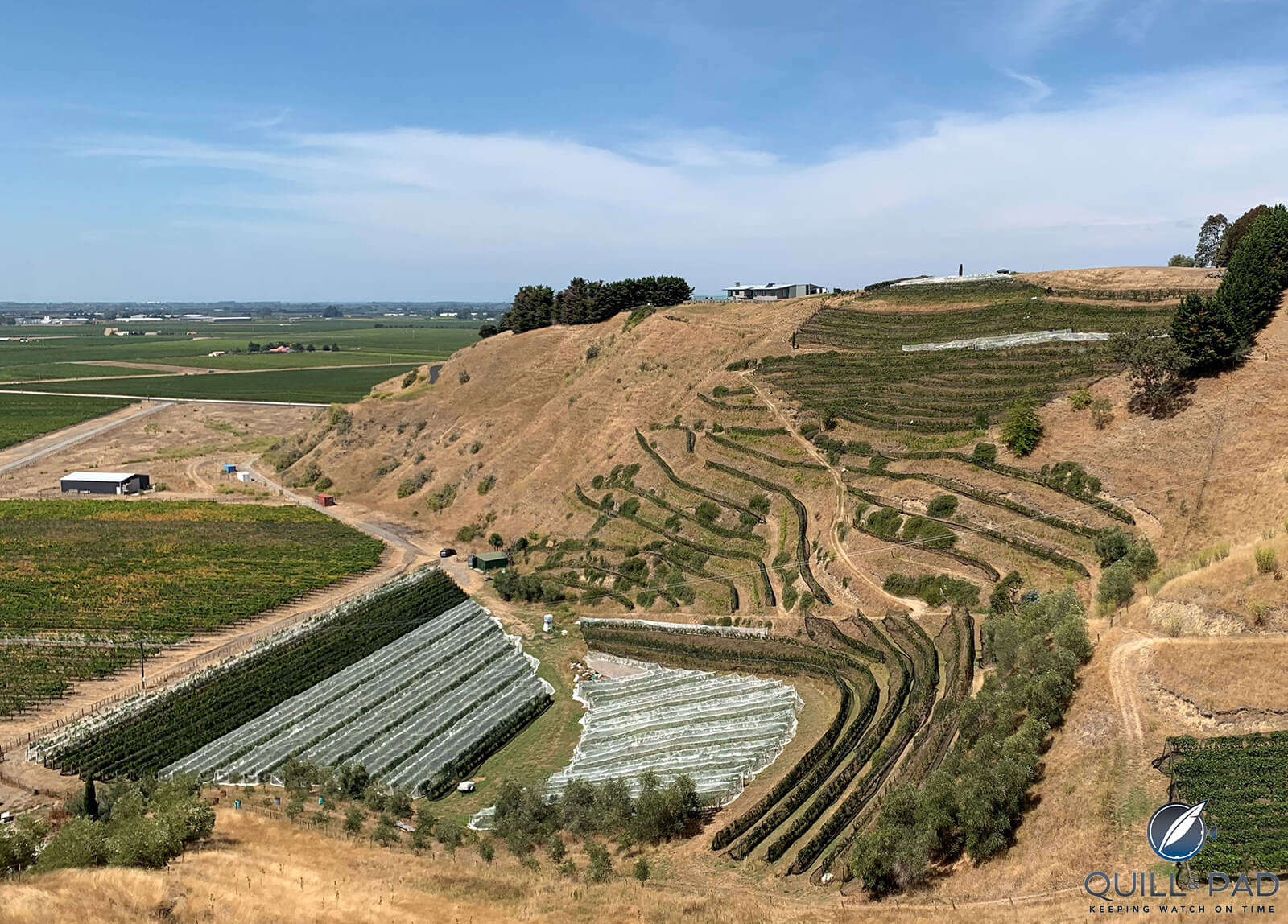
Bilancia La Collina (the hill) vineyard
We have already looked at both Craggy Range’s Le Sol and Trinity Hill’s Homage. The third of the trio of wonderful Syrah is Bilancia’s La Collina. Warren Gibson participates in the making of both La Collina and Homage, but with La Collina, he works with his wife, Lorraine Leheny, and it is their personal project. While quantities are tiny for each of the three wines, La Collina is the smallest production of the three and rarely seen.
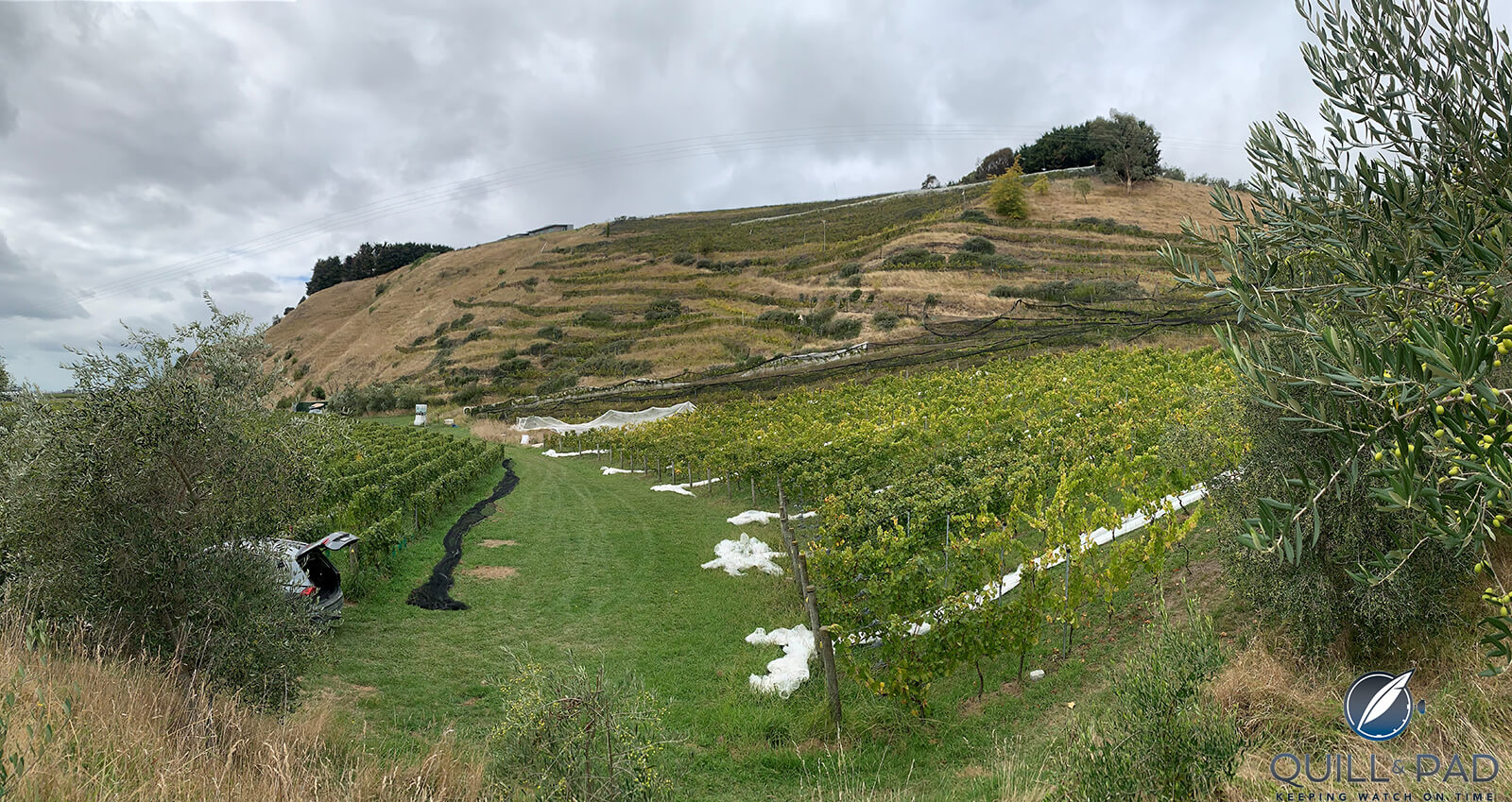
Bilancia vineyard in the Gimblett Gravels wine growing region of New Zealand
Demand is such that you may need to work hard if you are to source the wine, but the effort will be worthwhile. As an example, I believe that the entire Australian allocation (surely one of their bigger markets) is around ten cases. Others suggest that this is wildly optimistic. Worth noting that for such a stunning, world class wine, the price is ridiculously low – as it is for many of the best Kiwi wines. Around NZ$165, give or take.
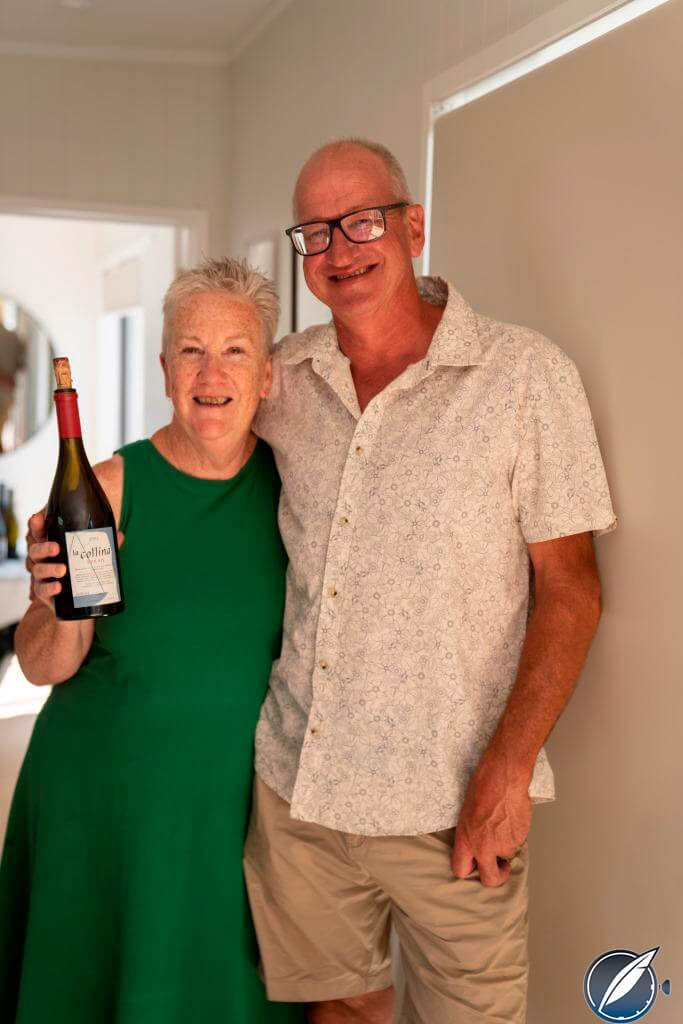
Warren Gibson and Lorraine Leheny collaborate on making the Bilancia La Collina wine
Warren and Lorraine studied at the famous Roseworthy Agricultural College in South Australia and then, between them, subsequently worked in wineries in Australia, California, New Zealand, France, Hungary, Italy and Portugal. In 1997, they returned to New Zealand, to Hawkes Bay, to establish Bilancia. Their first wines were released in 1998, which was the year they first began planting what has become their most famous vineyard, La Collina. Remember that the first New Zealand Syrah from the region was only made in the late 80s.
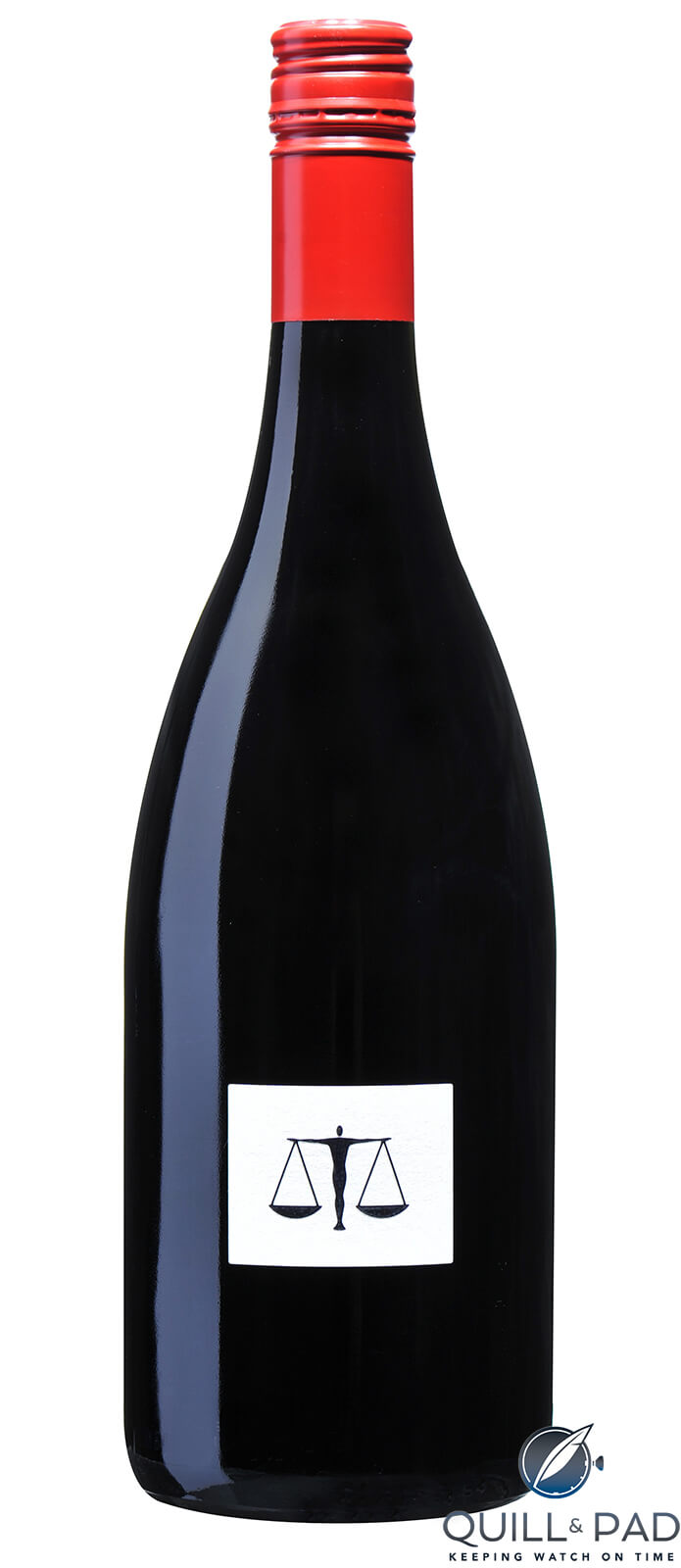
Bilancia La Collina
Bilancia is Italian for balance and harmony and is also apparently the Italian name of the Zodiac sign, Libra, for those who believe in such things. Warren and Lorraine were both born under that sign.
—————————————————————————————————–
—————————————————————————————————–
The gem in the Bilancia treasury is six hectares around the hill, known as Roy’s Hill. On the north/northwest facing slope, the Syrah vineyard known as La Collina is planted. La Collina is apparently Italian for hill. The Syrah is actually on the uppermost slopes and terraces, which provide for early ripening.
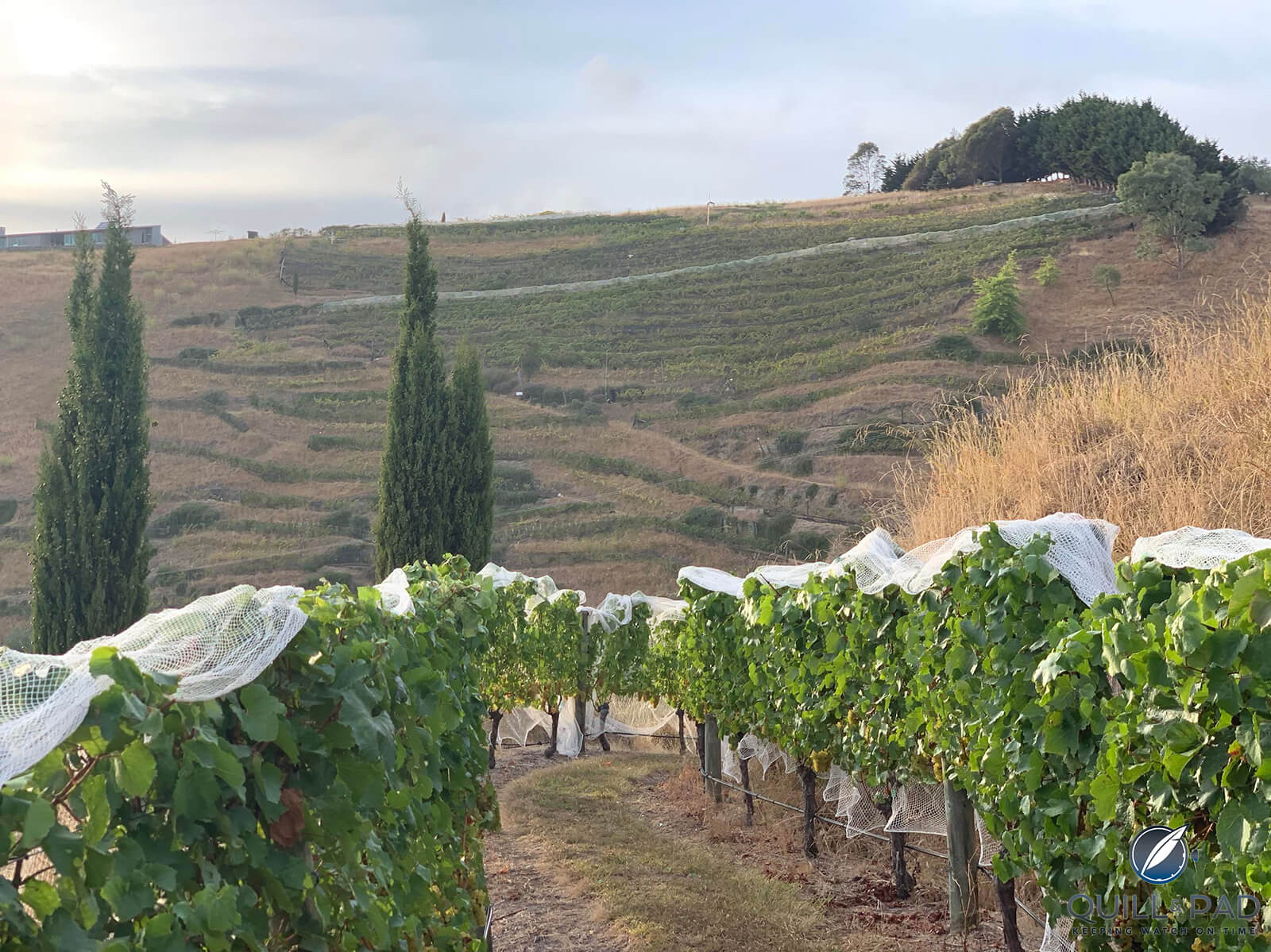
Bilancia Trelinnoe vineyard terraces
On the more gently sloping base and the gravel flats, they have planted Chardonnay, which provides the fruit for their Tiratore, as well as eight rows of Viognier, Marsanne and Roussanne. These eight rows are located on the edge of the gravels.
The other side of the hill is home to Trinity Hill.
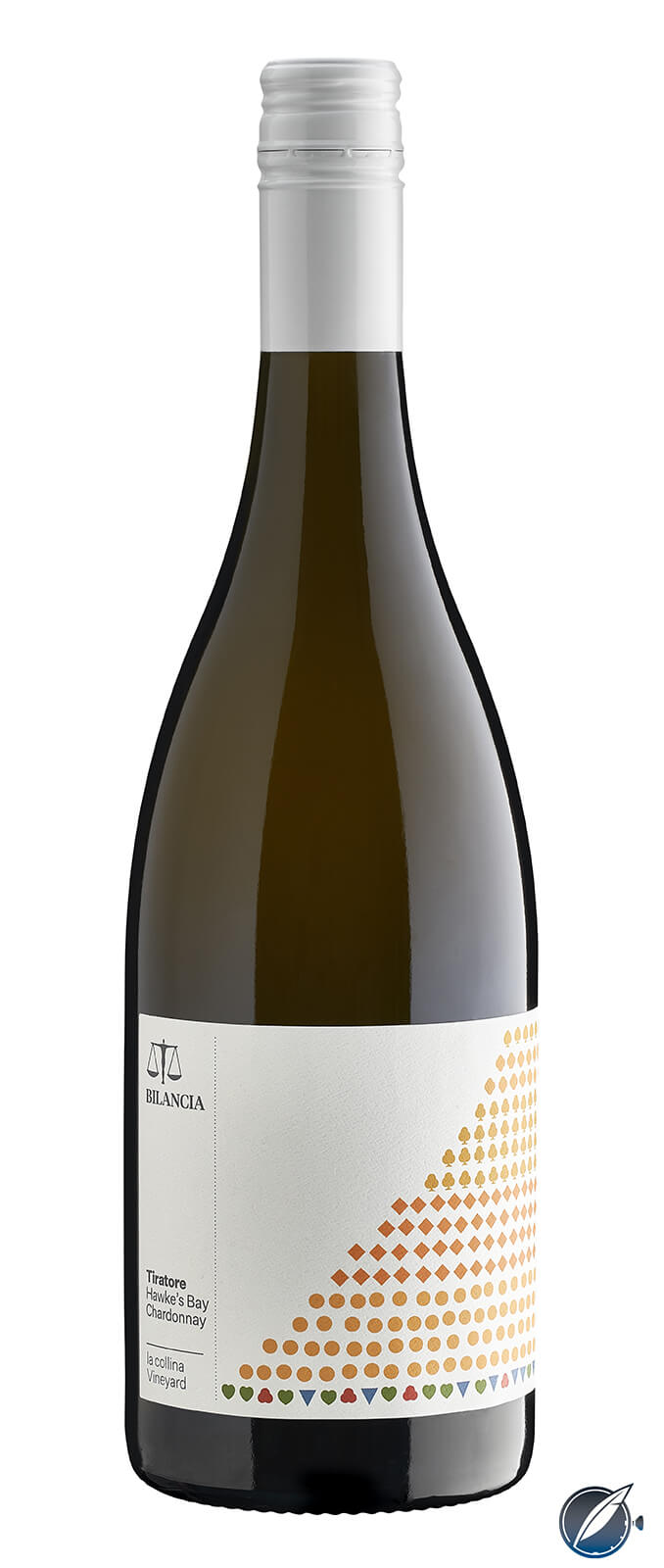
Bilancia Tiratore Chardonnay
Their Bilancia Tiratore Chardonnay was first released with the 2018 vintage. Tiratore apparently means marksman, which makes much more sense to me than star signs, as the vineyard was once a rifle range.
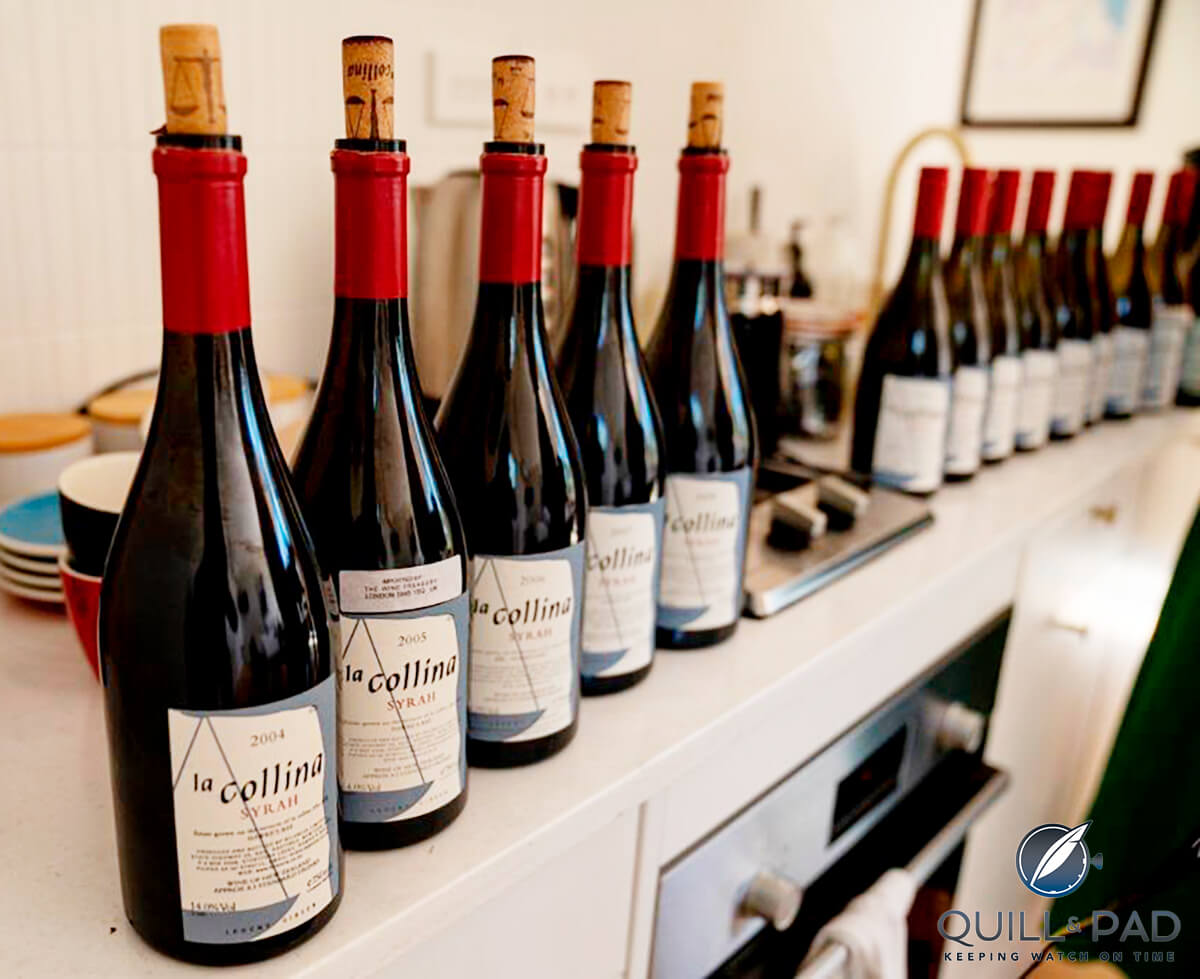
Bilancia La Collina vintages
The winemaking for La Collina is all about minimal intervention, and that includes use of oak. Wild fermentation is part of the regime. The Syrah is actually co-fermented with Viognier skins, not juice, ensuring it imparts the tiniest lift and additional complexity. Maturation is in French oak barriques for twenty to twenty-four months. Much of this is new, but it is described as ‘low impact’. Warren describes the aim at Bilancia being to reflect the site. La Collina was not made in 2011, 2012, 2017, 2022 and 2023.
—————————————————————————————————–
—————————————————————————————————–
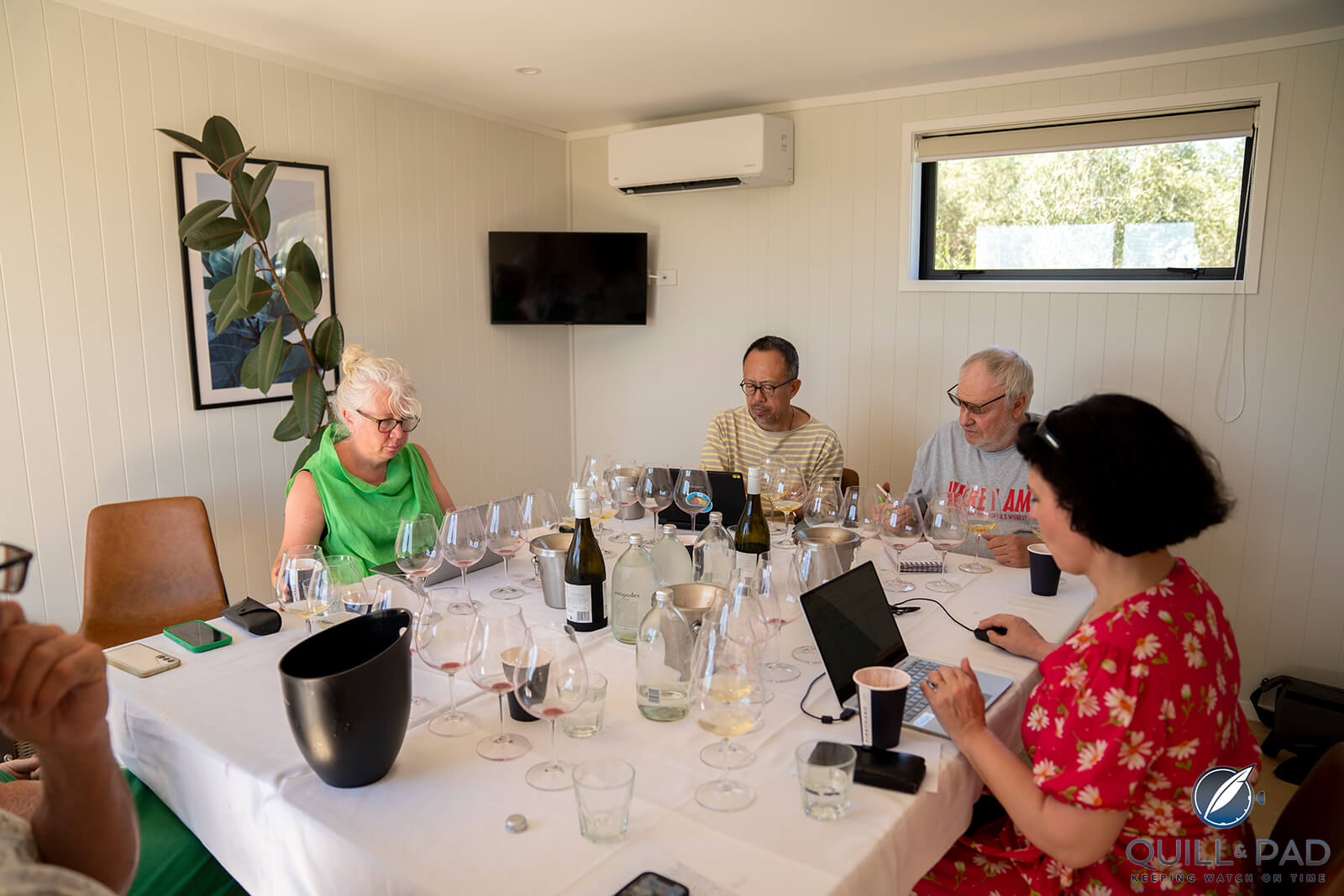
Serious work: Vertical tasting of Bilancia Bilancia La Collina vintages (photo courtesy Richard Brime)
The La Collina wines, a couple of which were tasted twice –
2021 – More red fruits here, redcurrants, red apples and still a hint of oak evident, though it is not intrusive in any way. Aniseed emerges on the palate. Silky tannins and a lingering finish. Will drink very well for a long time. A superb example of the style from a great vintage. 97. We looked at the same bottle quite a few hours later. Elegance, vitality, such gossamer-silky tannins. Amazing length. Ten to twenty years. It had stepped up even further. 98.
2020 – Dry herbs with a hint of tobacco leaf and spices. A whiff of white pepper. Coffee beans and chocolate. There is really good complexity and balance. Good focus here, with a fine grip and satiny tannins. The pepper lingers. Enjoy over the next ten to fifteen years. 94. Again, we saw the wine twice on the same day, with a significant gap between tasting, and again from the same bottle. What a transformation. It had exploded with precision and life. Blueberries had emerged and the wine looked even better. Surely a fifteen to twenty year proposition. Wonderful stuff. 98.
2019 – This is intense, slightly burly and with serious concentration. Leather, cloves, truffles, warm earth and mushrooms. Decent length, good focus and fine tannins. A vintage that does not imbue the wines with extra eleganc,e but there is certainly power and flavor here. A long future. 95.
2018 – A superb Syrah, delicious now, but which will age magnificently for at least another ten to twenty years. Fresh and bright now, there are notes of blackcurrants, blueberries, spices and vanilla. Still very youthful and hugely promising. Has amazing length. 97.
2016 – This is where we see wines which start to fall more on the youthful side of things (or perhaps, it is from here we start seeing wines exhibiting hints of maturity). Ripe, with raspberries, a touch of vanilla, blueberries and coffee beans. The raspberries emerge more on the palate. Good balance, a creamy texture and a lingering finish with a gentle fade. Now and for the next four to six years. 94.
2015 – A more savory style with animal skins, game, red fruits, soy, coffee grinds, dried herbs, spices and even a flick of pepper. A medium length wine, which is solid and appealing, even if not absolutely top shelf. It is still the sort of wine that many wineries would be over the moon to be able to present as their prestige release. 94.
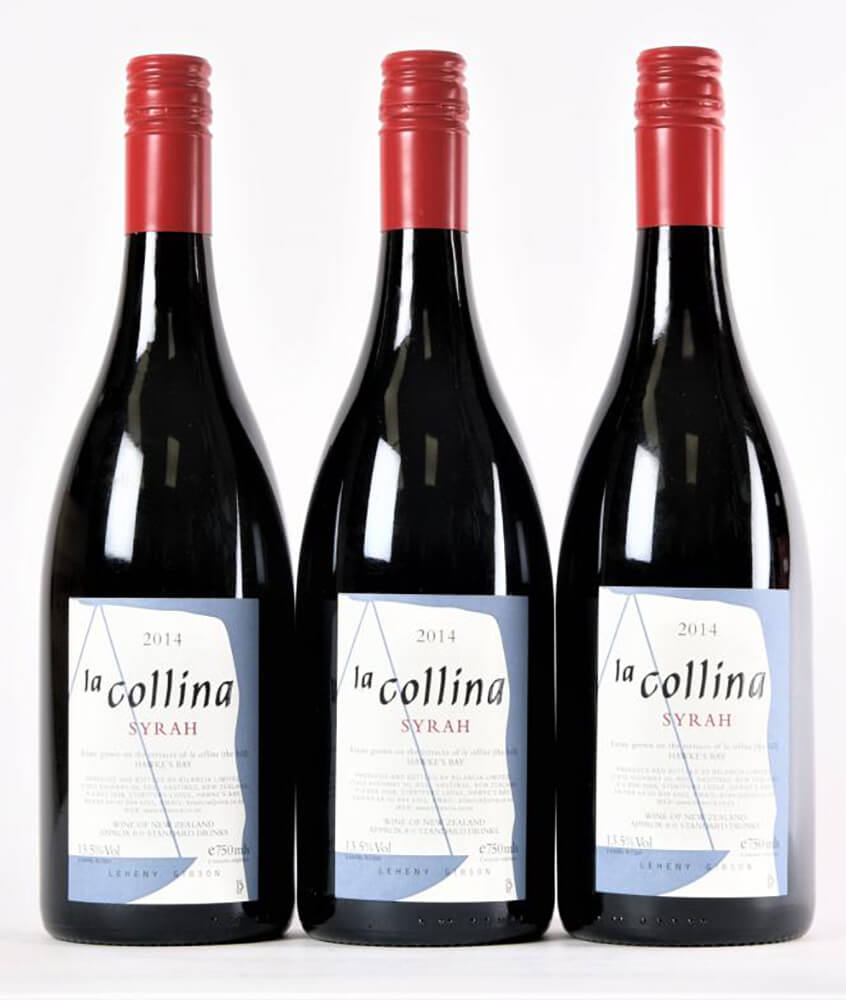
Bilancia La Collina 2014
2014 – A mature, attractive and complex red, drinking well now and for the next six years. Dark fruits, mushrooms, coffee grinds and dried herbs. Nicely balanced and quite seamless with sleek tannins. Still offers freshness and a lingering finish. 95.
2013 – This is the only vintage where the team used 100% whole bunches. It is fresh and energetic with spices, tobacco leaves, soy, aniseed, red fruits and dry herbs. Still so fresh and with an amazingly lifted aroma. Drink for twenty years. Love it. 98. A second bottle was more coffee grinds and mushrooms, without the same level of freshness. Mid length. For me, this one was 93. Fingers crossed, your 2013 is on a par with the first. Now comes the surprise. It was actually the same bottle. In the morning, we’d seen the bottle freshly opened. The second tasting was many hours later. I was very surprised it did not hold together more impressively. The younger wines certainly did.
2010 – This has always been a brilliant vintage for Gimblett Gravels Syrah. Homage is stunning. So is this. Cigar boxes, animal hides, game, truffles, dark berries, smoked meats, leather and cloves. Impeccable balance and a seductive texture. A really serious and seriously good wine. Good ripeness and silky tannins. Still ten years ahead of it. 98.
—————————————————————————————————–
—————————————————————————————————–
2009 – The wine offers an alluring core of sweet red cherries. Complex and mature, but still fresh. Red fruits, smoked meats, dry herbs and a hint of chocolate. Serious complexity here and very good length. Ten to twelve years. Lots to love. 96.
2008 – There is freshness here, with dry herbs and cold tea, florals, red fruits and notes of bergamot. The palate moves more to black cherries and olives. A lingering persistence. 12 to 20 years. 96.
2007 – Appealing red fruit notes here with blueberries, aniseed, soy and a hint of chocolate. Very fine lacy tannins with freshness and bright acidity. Will drink well for a decade or more. 95.
2006 – Complexity, structure and maturity. Spices, pepper, red fruits and aniseed, this is noticeably fresher than either 2004 or 2005. Sleek and seamless, the palate has red cherries, game notes, smoked meats, florals and a very fine line of acidity. Sleek tannins and excellent length, the wine finishes with hints of truffles. Will drink magnificently for at least another decade. 97.
2005 – Red fruits, hints of mushrooms, warm earth and a little spice. A soft, mature style with some good concentration on a lingering finish. 91.
2004 – More muted, with spices, red fruits and earthy notes. Hints of tomato bush and cloves. A supple texture, a little creamy, and there is still gentle acidity evident. Decent length. Probably one for drinking sooner. 92.
2002 – A great vintage, this is all licorice and cloves with black olives, mushrooms and animal skins. A superb complex and mature red. Excellent length, and the palate is stunning. This is the only wine in the series with no input from Viognier. Warren sees this as his “most Rhone-like”. 97.
In addition, some other Bilancia wines
Tiratore Chardonnay 2022 – A classically styled Chardonnay, slightly lean and elegant, but immaculately balanced. Peaches, a hint of grapefruit and melon. Seamless with zesty acidity. Good energy and a hint of almond bitterness at the very end. Six to ten years without a problem. 95.
Tiratore Chardonnay 2021 – Fresh, tart, focused with early complexity and good concentration. A hint of matchstick and orange rind with peaches, spices, cinnamon and bergamot. Oak is beautifully integrated. Fine balance and vibrant acidity here, with a creamy texture. Great length. This has ten years ahead of it. 96.
Tiratore Chardonnay 2020 – There is a slight smoky note here with nuts, guava and river stones. Still fresh with medium length, gentle complexity and appealing balance. Needs a touch more length to sit with the very best. Two to four years here. 93.
For more information, please visit www.facebook.com/BilanciaNZ
For more see
Gimblett Gravels Annual Wine Selection 2021: An Exceptional Wine Region, Exceptional Wines
Trinity Hill Homage Syrah: A Strong Contender For New Zealand’s Best Wine
Pyramid Valley Wine From New Zealand: Terroir Taken To The Extreme

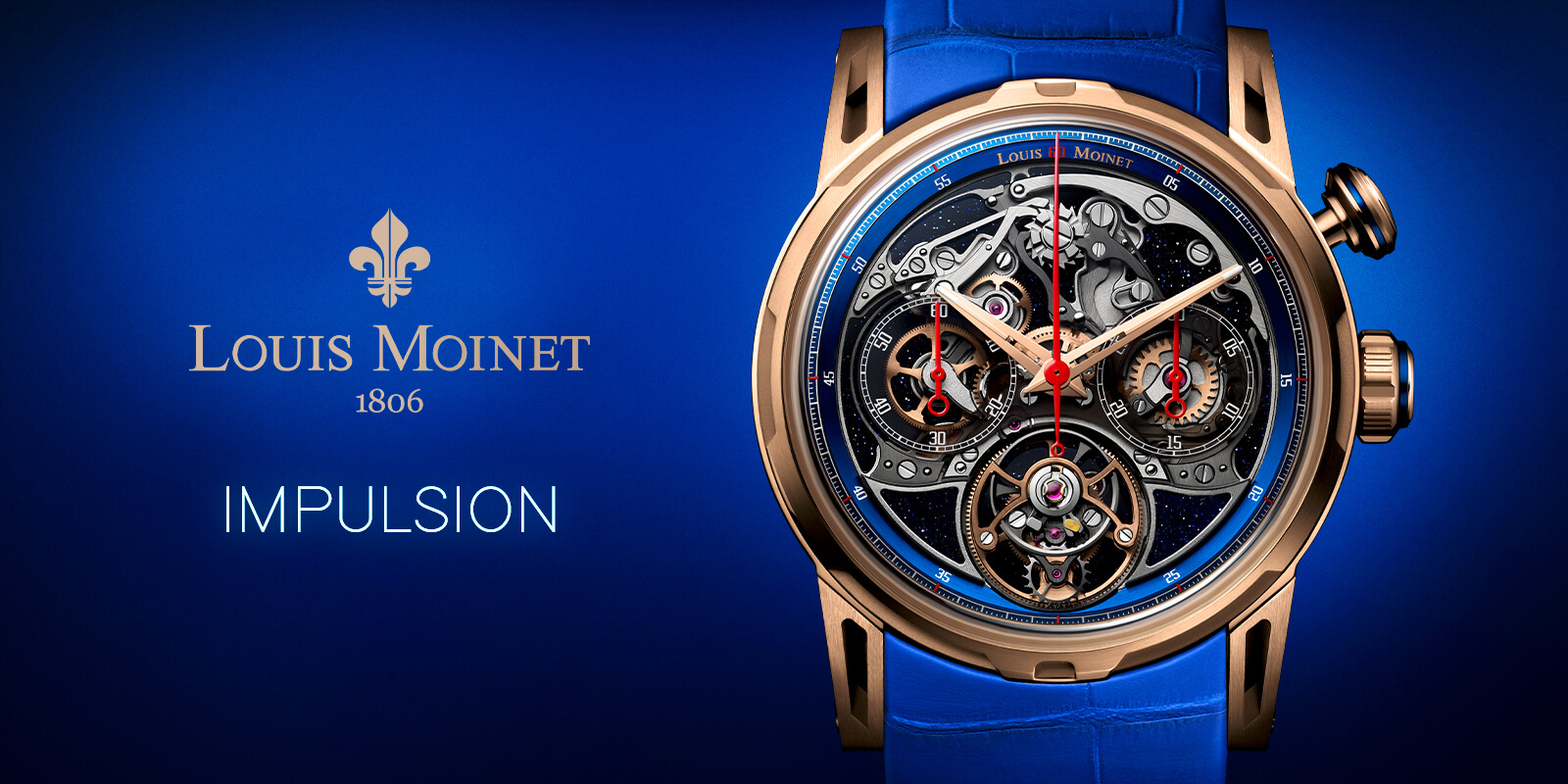
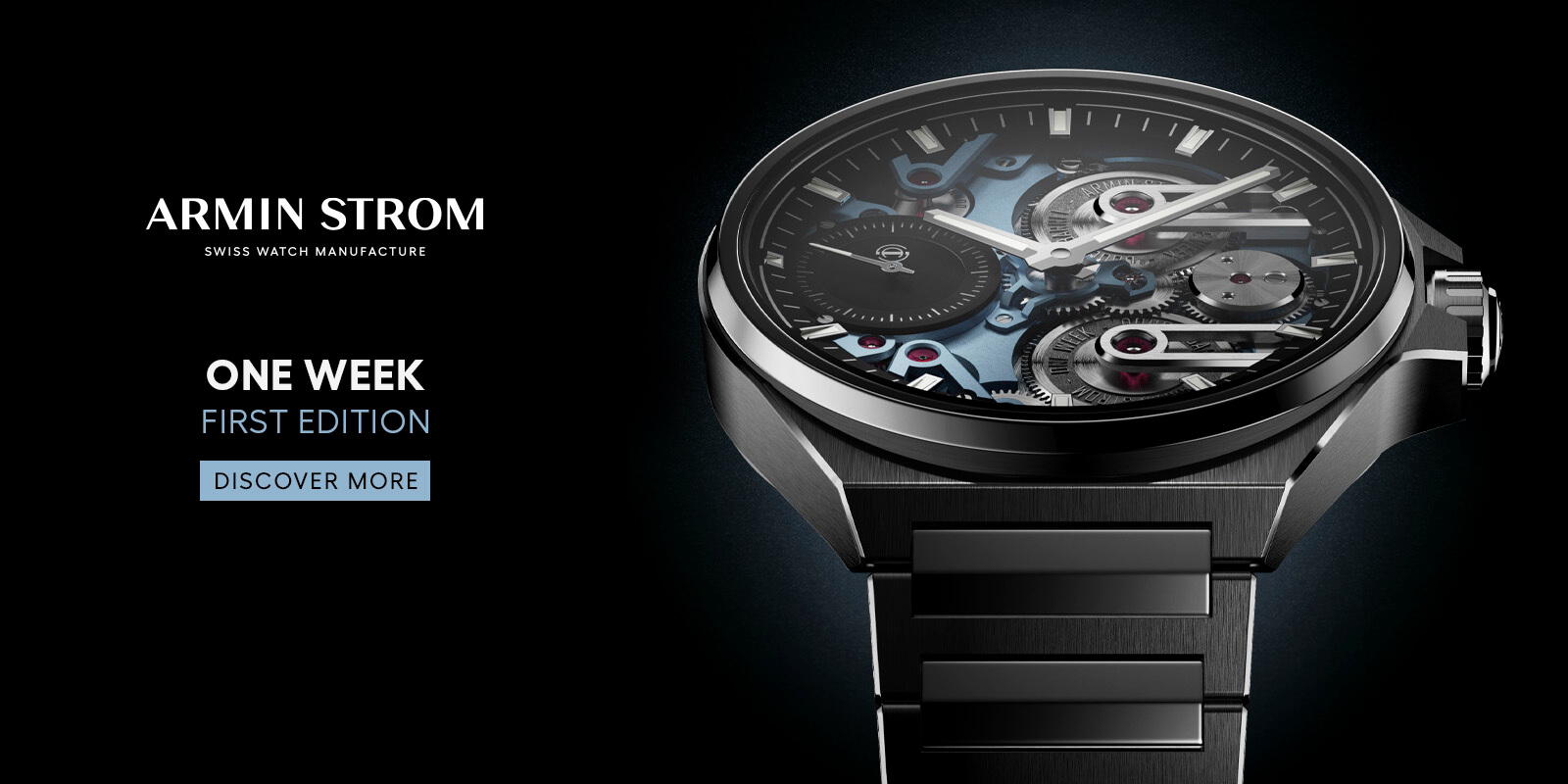
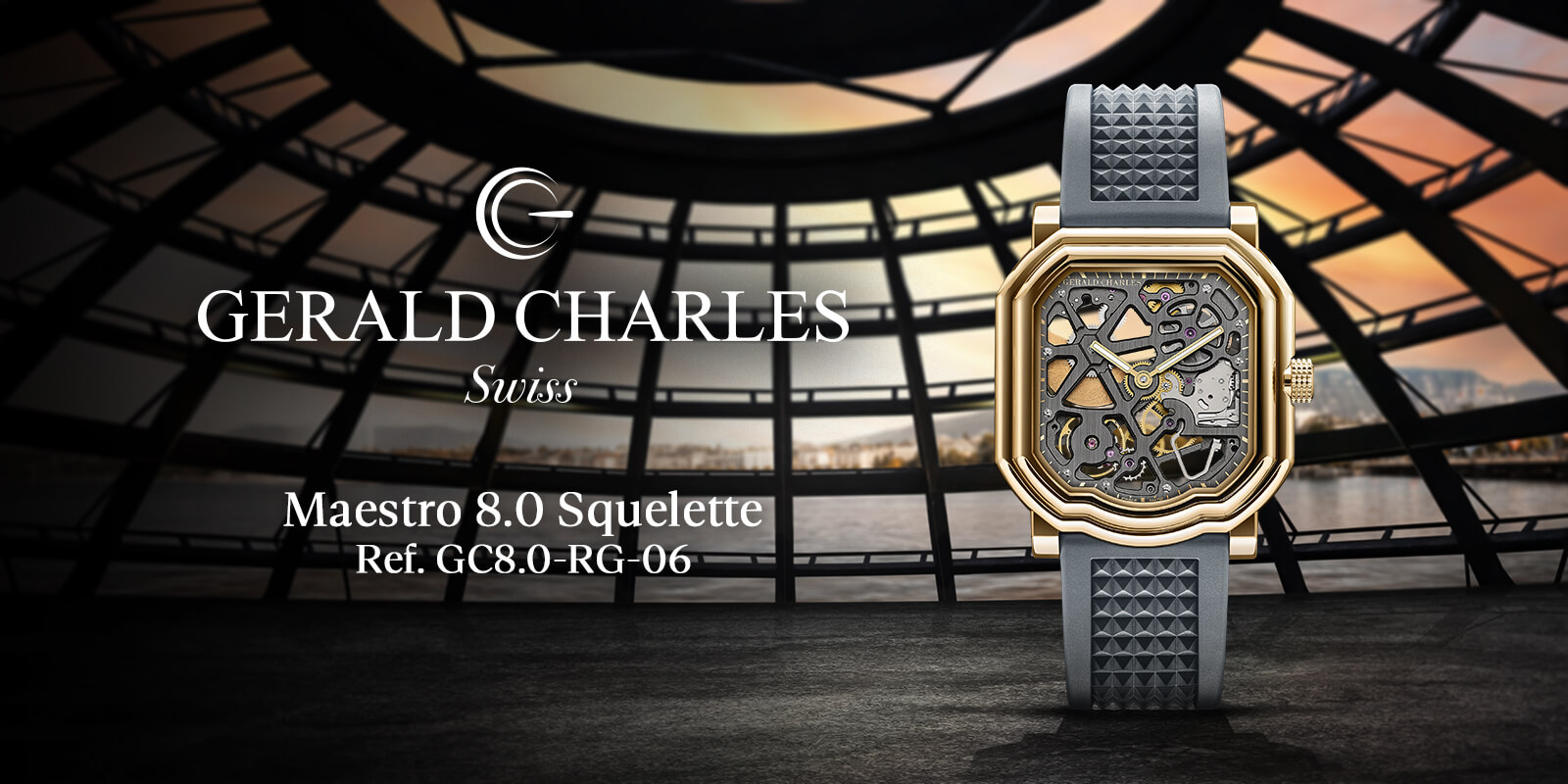
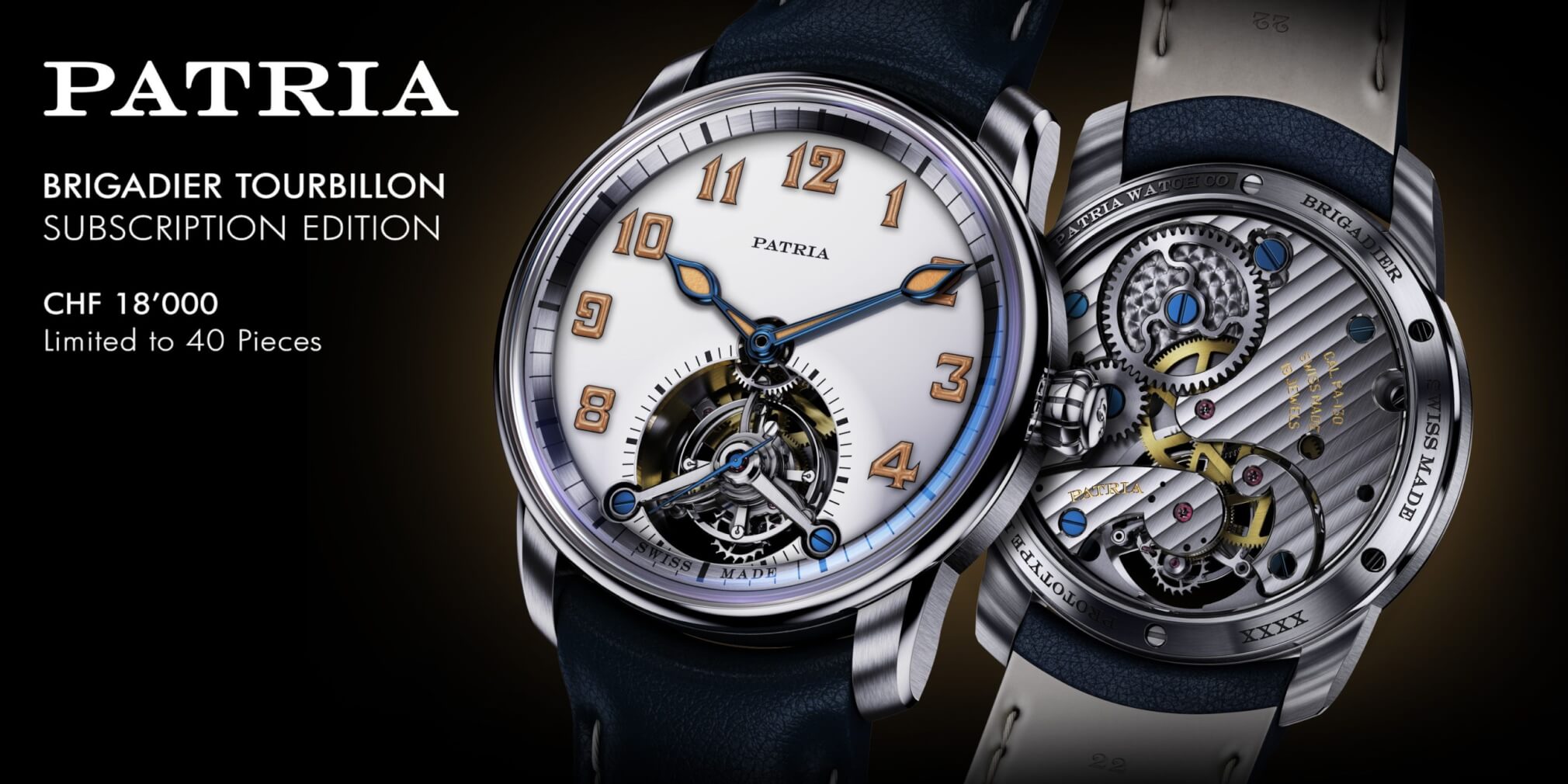


Leave a Reply
Want to join the discussion?Feel free to contribute!